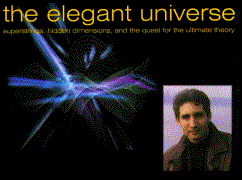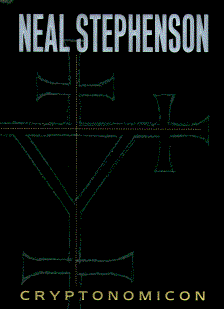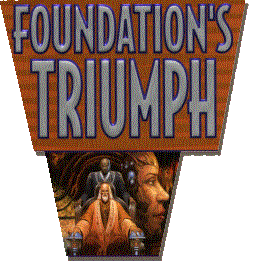

These are the reviews from April through August of 1999. For newer reviews, go back to the main book page.
This little book is a delightful mixture of how-to manual and humorous memoir. The author shares extensive advice about how to function as a temp (temporary employee) in an office environment. The tips and advice are supported by anecdotes and examples, plus more than two dozen very cute cartoons by Mark Steele.
 The first half of the book is devoted to three fundamental questions:
The first half of the book is devoted to three fundamental questions:
The first question is an interesting one. Personally, I worked nights as a temp in my high school years, but never considered it as a possible career. However, Ms. Feltman makes a pretty convincing case that "temping" has significant good points, among them mobility, breadth of experience, and flexibility.
As for finding work as a temp, the book includes valuable advice about how to find a temp agency, assess the agency's quality, and make a good impression. The mechanics and conventions of working as a temp are rather different than working as a traditional employee. The chapter entitled "Sticking that Toe in the Water" walks through some of the potential pitfalls for new temps, and includes some very insightful tips.
The most valuable aspect of the first half of the book is its positive tone. Working as a temp is usually hard work, and the author doesn't try to deny that, but the prose is unfailingly upbeat and encouraging. For anybody about to begin work as a temp, this kind of moral support could be very helpful.
The second part of the book is less structured than the first; it is an informal melange of nostalgia, cautionary tales, and suggestions. This part will probably evoke chuckles from experienced career office workers, but could be very valuable for novices (even those that aren't temps). My favorite part of this section is "The Temp's Survival Kit", a short chapter about what to pack in a kit for that first day on the job.
It is a fact of life that, even in the 90s, most temps are women and most temp jobs are clerical or secretarial. This is Ms. Feltman's background, and much of the book is devoted specifically to it. Of course, there are other kinds of temp work, but Ms. Feltman can hardly be blamed for writing about what she knows best. In the end, her experience, insight, and wit make TEMPtations a charming and potentially very helpful book.
The book also has a companion web site (not noted anywhere on the cover),
it is www.kahrol.com.
Conclusion: Recommended, highly so for aspiring temps!
Mathematics is famously alien, notoriously distant and difficult for all but the smartest people. This book sets out to communicate the joy and excitement of mathematical insight, in a way that even non-mathematicians can experience. A mathematical epiphany is the moment at which the solution or noumenon for a mathematical problem becomes clear. It's a beautiful feeling, but one that doesn't come easily. Prof. Benson clearly put tremendous effort into finding topics and areas of mathematics where the epiphanies lie in shallow water, almost discernible beneath the rippling surface of geometry, algebra, or number theory.
The Moment of Proof is moderate in length, compared to some other recent mathematics survey for general readers; at 300 pages, it is less than half the size of Jan Gullberg's 1997 opus. Of course, Prof. Benson is not trying to survey the vast history and breadth of mathematics. Instead, selected topics receive detailed treatment; the title may make it sound like theorems and proofs are central to the book, but in fact the text contains very few proofs. Some of the most successful topic selections are listed below.
There is relative surfeit of math books for non-mathematicians available today; reviews of several area available on this web site. The real questions for The Moment of Proof are: does it convey real mathematics, and does it meet its goal of precipitating mathematical epiphanies? In general, the presentation of the mathematics is impeccable, as we might expect from a distinguished professor. Conveying the feeling of epiphany is much harder. Any book like this the author has to walk a thin line between over-simplification and accessibility. In some of the topics, Prof. Benson falls over this line one way or the other, making some of the chapters less engaging than others. The reader that sticks with the book may, with luck, catch a flash of mathematical epiphany.
Conclusion: Recommended, but best for serious math fans
 Since the 1980s, a rather audacious proposal called
string theory has been gathering strength in
the lofty realm of theoretical physics. Several
popular accounts of string theory have been written,
including the popular 1995 Beyond Einstein.
However, Brian Greene's new book is a much more detailed,
more convincing explanation of this fascinating theory
than its predecessors.
Since the 1980s, a rather audacious proposal called
string theory has been gathering strength in
the lofty realm of theoretical physics. Several
popular accounts of string theory have been written,
including the popular 1995 Beyond Einstein.
However, Brian Greene's new book is a much more detailed,
more convincing explanation of this fascinating theory
than its predecessors.
The five chapters give some background about
relativity, quantum mechanics, and elementary particles.
This section also explains the motivations for seeking a
unified theory.
Prof. Greene really warms up to the subject matter in section III, "The Cosmic Symphony". His explanation of the conceptual basis for strings (and superstrings) is excellent: somewhat technical, but very clear. Unlike some other physicists attempting to explain this field to laymen, Prof. Greene does not avoid the essential topological basis of superstring theory. Chapter 8 uses excellent diagrams to gradually develop superstring theory's multi-dimensional character,
Probably the most serious difficulty facing string theory is its lack of experimental verification. Chapter 9 explains this problem in an optimistic but forthright way. First, because the mathematics underlying the several competing string theories are so complex and thorny, physicists have yet to use the theory itself to predict any physical quantity to great precision (a hallmark of successful formulations of quantum mechanics). Second, the energies required to probe superstrings directly are far too great for humans to create. Much of Chapter 9 is devoted to means for solving, or least approaching, some of the open issues in string theory, and prospects for testing some features of particle physics implied by some versions of string theory.
While The Elegant Universe does a great job explaining superstrings and their dimensional basis, it is not a book that you would pick up to read casually. The detailed text requires careful attention, partly because superstrings are quite strange and novel, and also because physicists themselves don't have a final or complete picture yet. For readers that understand the topic, and wish to delve further, Prof. Greene has provided a very extensive annotated list of references at the back of the book
Conclusion: Recommended
 CRYPTONOMICON
CRYPTONOMICON
Two sets of plots wind through the hefty length of this book: one group taking spanning the years 1941-1945, and the other main plot set in roughly the present day, or perhaps a year from now. Of course, the events in all the plots are intertwined, but the author braids the plots together gradually and carefully. This is Neal Stephenson at his finest: the manic energy of 1992's Snow Crash blended with a new maturity and craftsmanship. The striking plots take place on a solidly researched background, in the 1940s and the present; the characters are novel but absolutely convincing.
If all that this book had to offer was well-handled plot and fine characters, there would be little to separate it from other good adventure/thriller novels. What gives Cryptonomicon a unique and entralling quality is the way the author has woven cryptographic ideas into the book's fabric. In some parts of the story, cryptography and cryptanalysis are quite central; one of the main characters is a mathematician and WWII cryptanalyst. In other parts, however, the cryptographic ideas are subtle and implicit.
All of the cryptography is technically sound and completely realistic, to a degree that even someone well-acquainted with the field will have trouble spotting tiny discrepancies. The depiction of the computer and network technologies and cryptography-related social issues that drive the characters in the 1999 plot-line are nearly as firm and obviously well-researched.
The only downsides to this book were probably unavoidable: violence, sex, and complexity. The WWII plots include substantial wartime violence, eloquently but graphically described. On a side note, the historical supporting characters are wonderfully done: Alan Turing (academic cool), Douglas MacArthur (military cool), and Hermann Goring (gross). All of the plot-lines include a modicum of sex, handled quite reasonably except for a too-subtle thread about fine furniture. The complexity of the book may put off some readers at first; it's as if three novels are jumbled into a space barely big enough for one of them. Careful attention and a modest familiarity with the history of WWII will make the book accessible for general readers.
His previous two books are among the best near-future science fiction written in the 1990s. Now Neal Stephenson is breaking into mainstream with similar results - don't miss this one!
Conclusion: Highly Recommended
 The main character of all three books is the
inventor of psychohistory, Hari Seldon.
In Foundation's Triumph, Seldon is nearing the end of his life,
but manages to embark on one last adventure. Lured from his sickbed
by an innocent-seeming bureaucrat to pursue a simple mystery of
planetary distribution, Hari finds himself embroiled in a
desperate struggle among human and robot fanatics.
David Brin deftly ties
together the diverse narrative threads from the previous two books:
Foundation's Fear and Foundations and Chaos.
He also introduces several interesting new characters.
The main character of all three books is the
inventor of psychohistory, Hari Seldon.
In Foundation's Triumph, Seldon is nearing the end of his life,
but manages to embark on one last adventure. Lured from his sickbed
by an innocent-seeming bureaucrat to pursue a simple mystery of
planetary distribution, Hari finds himself embroiled in a
desperate struggle among human and robot fanatics.
David Brin deftly ties
together the diverse narrative threads from the previous two books:
Foundation's Fear and Foundations and Chaos.
He also introduces several interesting new characters.
In undertaking the final book of the second Foundation trilogy, Brin may have accepted a task too great even for his enormous talent. The Foundation corpus consists of seven books dedicated directly to the Foundation plus over a dozen more that comprise the Robot/Empire/Foundation timeline. These books were written by Isaac Asimov in several different periods of his life (from Foundation in 1951, to Forward the Foundation in 1994). The later ones exhibiting more complex and subtle ideas about the evolution of his archetypal galactic empire. On top of that, David Brin has to somehow conclude or wrap up the many open issues left by his colleagues Gregory Benford and Greg Bear.
David Brin's strongest point has always been the ability to create evocative cultures and conflicts. Taking his cue from subtle hints in Asimov's later work, he paints a dramatic picture of the struggle between galactic humanity and a destructive, infectious social malaise called "chaos." The theme of staid imperial society versus frothy, deadly chaos is treated in some detail in the aptly named "Foundation and Chaos" Only in Foundation's Triumph does the reader gain an understanding of its full implications, and the extent to which the fear of it has controlled the actions of the immortal robot Daneel Olivaw.
(R. Daneel Olivaw is one of the cooler characters Isaac Asimov ever dreamed up, and the three authors that cooperated to build this new Foundation Trilogy have all handled his enigmatic character quite well. For Daneel, it has been a long and arduous journey from a novice policeman quelling a riot in a shoe store to an immortal sculptor of galactic destiny.)
While the writing style and pace of this novel are unmistakably those of David Brin, it is true to the legacy of Isaac Asimov. Dr. Asimov loved a finely crafted story mixing logic and adventure, grand ideas and human feeling. David Brin has admirably completed the task that he and his fellow authors started back in 1997 the new Foundation Trilogy, now complete, will delight any science fiction fan, especially those that got their introduction to the genre with the classic Foundation series
Conclusion: Recommended
All reviews (c) 1999, Neal Ziring. Reviews may be reproduced in whole or
in part as long as authorship credit is preserved.
[Ziring
MicroWeb Home] [Neal
Ziring] [Julie
Ziring]
[Ziring Guestbook]
This page written by Neal Ziring, last modified 10/9/99.